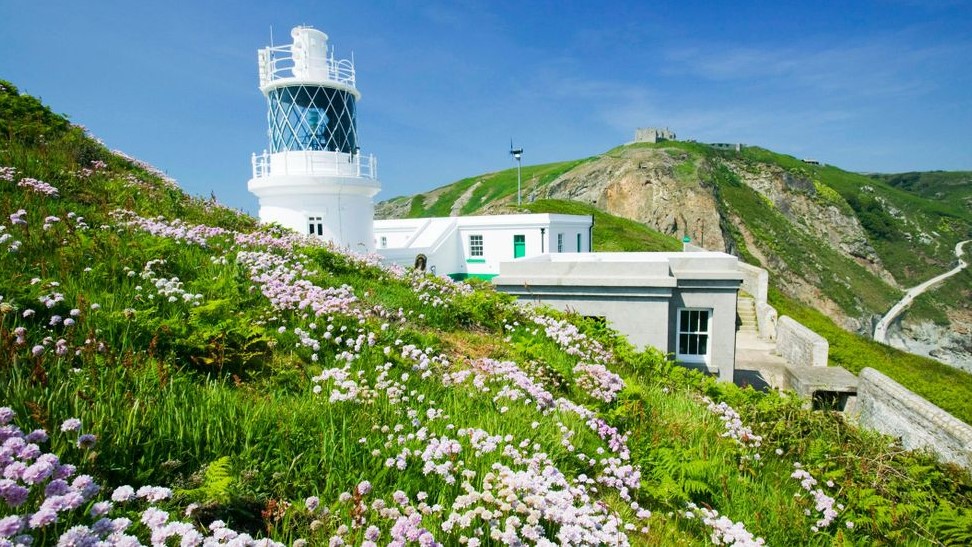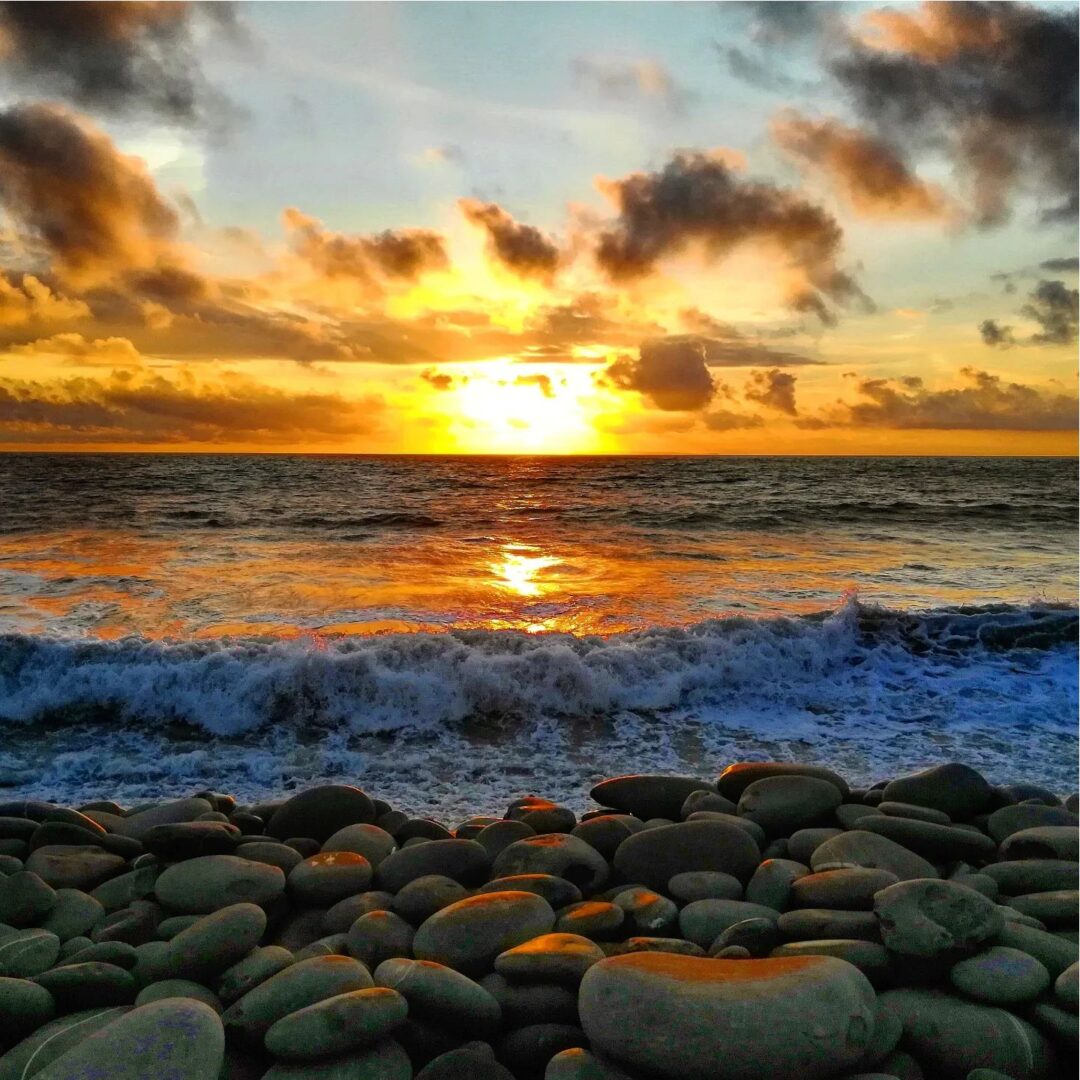Lundy Island, a captivating destination nestled in the Bristol Channel off the coast of North Devon, England, is renowned for its natural beauty and rich historical significance.
Covering a modest three square miles, this small granite outcrop offers an array of enchanting landscapes, diverse wildlife, and archaeological wonders.
When planning your trip to Lundy Island, it’s crucial to understand the island’s weather patterns and conditions.
Whether exploring the rugged coastline, observing remarkable wildlife, or immersing oneself in the island’s fascinating history, being well-informed about Lundy’s weather ensures a safe and enjoyable trip.
Overview of Lundy’s Climate

Lundy Island experiences a maritime climate, heavily influenced by its location in the Bristol Channel.
The island tends to have mild temperatures throughout the year, with cooler winters and relatively cooler summers compared to mainland Britain.
Lundy’s climate is characterized by a higher average annual rainfall compared to nearby coastal regions, often resulting in misty conditions and frequent cloud cover.
The island is also known for its strong winds, particularly during the winter months, which add an exhilarating element to its rugged and exposed landscape.
Average Temperatures throughout the Year

The weather and average temperatures on Lundy Island throughout the year can be summarized as follows:
- Winter: The temperature ranges from around 8°C (46.4°F) to 9°C (48.2°F), making it a cooler season to visit.
- Spring: Temperatures gradually increase, averaging between 10°C (50°F) and 15°C (59°F).
- Summer: The island experiences relatively pleasant summers, with average temperatures ranging from 17°C (62°F) to 20°C (68°F).
- Autumn: As autumn approaches, temperatures start to cool down again, ranging from 14°C (57°F) to 21°C (70°F).
Visitors should be aware of these temperature fluctuations as they plan their activities and choose appropriate attire for their time exploring the island.
Rainfall Patterns
Due to the maritime climate of Lundy Island, it is characterized by a moderate amount of rainfall throughout the year.
The island sees higher rainfall levels during the autumn and winter months, with October and November being the wetter periods.
Spring and summer tend to be drier, although showers can occur sporadically.
Visitors should be prepared for the possibility of rain and occasional storms, particularly during the wetter months, but can also enjoy relatively drier conditions during the spring and summer seasons.
Wind Conditions

Lundy Island experiences notable wind conditions due to its exposed location in the Bristol Channel.
The prevailing winds on the island generally come from the southwest. Visitors should be aware that Lundy can be subject to strong winds, especially during the winter months, with gusts occasionally reaching high speeds.
These wind conditions can have an impact on outdoor activities, such as hiking or sailing, making it essential for visitors to plan accordingly and take necessary precautions to ensure their safety.
Fog and Mist

Lundy Island is known for its occasional fog and mist, particularly due to its maritime location in the Bristol Channel.
The island’s proximity to the sea and its varied topography can create atmospheric conditions conducive to the formation of fog and mist.
Fog and mist can significantly impact visibility on the island, making it essential for visitors to exercise caution while exploring or planning outdoor activities.
It is advisable to stay updated with weather forecasts and, if necessary, adjust travel plans accordingly to ensure a safe and enjoyable experience on Lundy Island.
Special Weather Considerations
Lundy Island, due to its exposed location in the Bristol Channel, can experience extreme weather events such as storms and high tides.
During storms, strong winds and heavy rainfall can occur, potentially affecting outdoor activities and transportation to and from the island.
Visitors should closely monitor weather forecasts and follow any safety advisories or precautions issued by local authorities, including staying indoors, avoiding coastal areas, and following evacuation instructions if necessary, to ensure their safety during such events.
Tips for Dressing and Packing
When visiting Lundy Island, it is important to dress appropriately for the season and expected weather conditions.
Here are some tips for dressing and packing appropriately when visiting Lundy Island:
- In colder months (winter and autumn), bring warm layers like a waterproof jacket, hats, scarves, and gloves to stay comfortable in the lower temperatures.
- For the milder seasons (spring and summer), opt for lightweight and breathable clothing. Don’t forget to pack a light jacket or sweater for cooler evenings.
- Remember to pack sturdy walking shoes or boots for exploring the island’s outdoor areas. Additionally, bring sunscreen and a hat to protect yourself from the sun’s rays while enjoying the island’s beauty.
Weather Forecast Resources
Visitors to Lundy Island can check the latest weather forecasts using the following reliable sources:
- The UK Met Office website and app: This trusted resource provides accurate and detailed forecasts for Lundy and the surrounding area.
- The Lundy Island website: The official website of Lundy Island often offers localized weather information and updates, making it a valuable resource for visitors seeking specific island-related forecasts.
- Local weather apps: Various weather apps, such as BBC Weather or AccuWeather, can provide real-time weather updates for Lundy Island, allowing visitors to stay informed about the current conditions while on the go.
In Summary
Lundy Island, nestled in the Bristol Channel off the coast of North Devon, England, offers captivating landscapes and rich history.
Understanding Lundy’s unique weather patterns is essential for a safe and enjoyable trip.
The island experiences a maritime climate with mild temperatures, higher rainfall, strong winds, occasional fog, and mist.
Visitors can expect cooler winters, pleasant summers, and fluctuating temperatures throughout the year.
Dressing appropriately and staying updated with weather forecasts will ensure a comfortable experience while exploring this enchanting island.
So plan your visit to Lundy Island and share your experiences in the comments below!

Our newsletter is packed with helpful tips and resources to help you mazimise your time in & around Bideford. Sign up now and join our community of savvy Bideford’ers.
About the Author
Welcome to Bideford.com! I’m Jason Jr, a seasoned explorer and avid fan of Bideford and the broader North Devon area. With over a decade of consistent family visits, virtually every weekend, I’ve immersed myself in the rich history and vibrant culture Bideford & North Devon.
On this site, you’ll find a wealth of knowledge amassed from my adventures here. From in-depth local guides to engaging blog posts about Bideford. Whether you’re looking for recommendations on things to do or guidance on where to stay we have you covered. Join me as we delve into the heart of Bideford, North Devon – a town that’s more than just a destination, but an experience waiting to be discovered.
Do you want to see your favourite Bideford attraction, place to stay, event or activity listed here? Contact Us!







